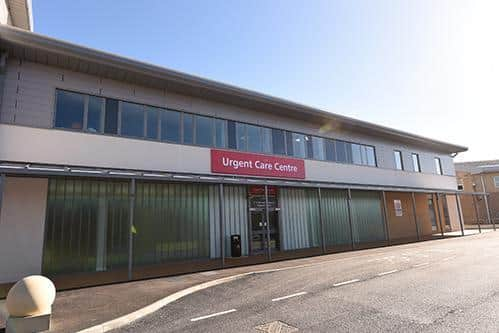Omicron and winter pressures impact East Lancashire hospitals
and live on Freeview channel 276
Hospitals across the country are grappling with staff absences and an increase in demand, while ambulance handover delays and bed blocking are adding strain on services.
NHS England data shows 716 people arrived at East Lancashire Hospitals NHS Trust A&E by ambulance in the week to January 9th.
Advertisement
Hide AdAdvertisement
Hide AdOf them, 104 (15%) waited more than 30 minutes before being handed over to A&E staff, with two waiting more than an hour.


This was up from 14% waiting over half an hour the week before.
The NHS has a target of 15 minutes for ambulance handovers, but only delays longer than 30 minutes are recorded.
The data also shows an average of 622 staff were off sick because they had Covid-19 or were self-isolating due to the virus each day in the week to January 9th – accounting for 55% of absences.
Advertisement
Hide AdAdvertisement
Hide AdThis was up from the week before when 42% of staff were off for Covid-related reasons.
Professor Stephen Powis, NHS national medical director, said Omicron had increased the number of people in hospital with Covid, while “drastically” reducing the number of staff able to work.
He said: “Despite this, once again, NHS staff pulled out all the stops to keep services going for patients.
“But staff aren’t machines and with the number of Covid absences almost doubling over the last fortnight and frontline NHS colleagues determined to get back to providing even more routine treatments, it is vital that the public plays their part to help the NHS by getting your booster vaccine.”
Advertisement
Hide AdAdvertisement
Hide AdSeparate figures show bed blocking was also causing issues at trusts across England last week, with 72% of patients deemed fit to leave hospital on January 9 – the latest date for which data is available – failing to be discharged.
At East Lancashire Hospitals Trust, 69 patients were eligible for discharge on January 9, but just 24 left hospital.
Meanwhile, waiting lists for routine treatments are also at an all-time high nationally, with six million people waiting for non-urgent elective operations or treatment at the end of November, up from 5.98 million the month before.
NHS England figures show 34,991 patients at East Lancashire Hospitals Trust were on the waiting list at the end of the month – though this was 119 fewer than the month before.
Advertisement
Hide AdAdvertisement
Hide AdShadow health secretary Wes Streeting said the NHS was unprepared for the pandemic and had no “spare capacity” when the Omicron variant hit.
He said: “Now patients are paying the price, waiting months and even years for treatment, often in pain, distress and discomfort.”
Siva Anandaciva, chief analyst at the King’s Fund, said long waits for care were becoming increasingly common.
He said: “We must remember these are not just big numbers – they are people living with pain and anxiety while they wait for months and, in some cases, more than two years for treatment.”